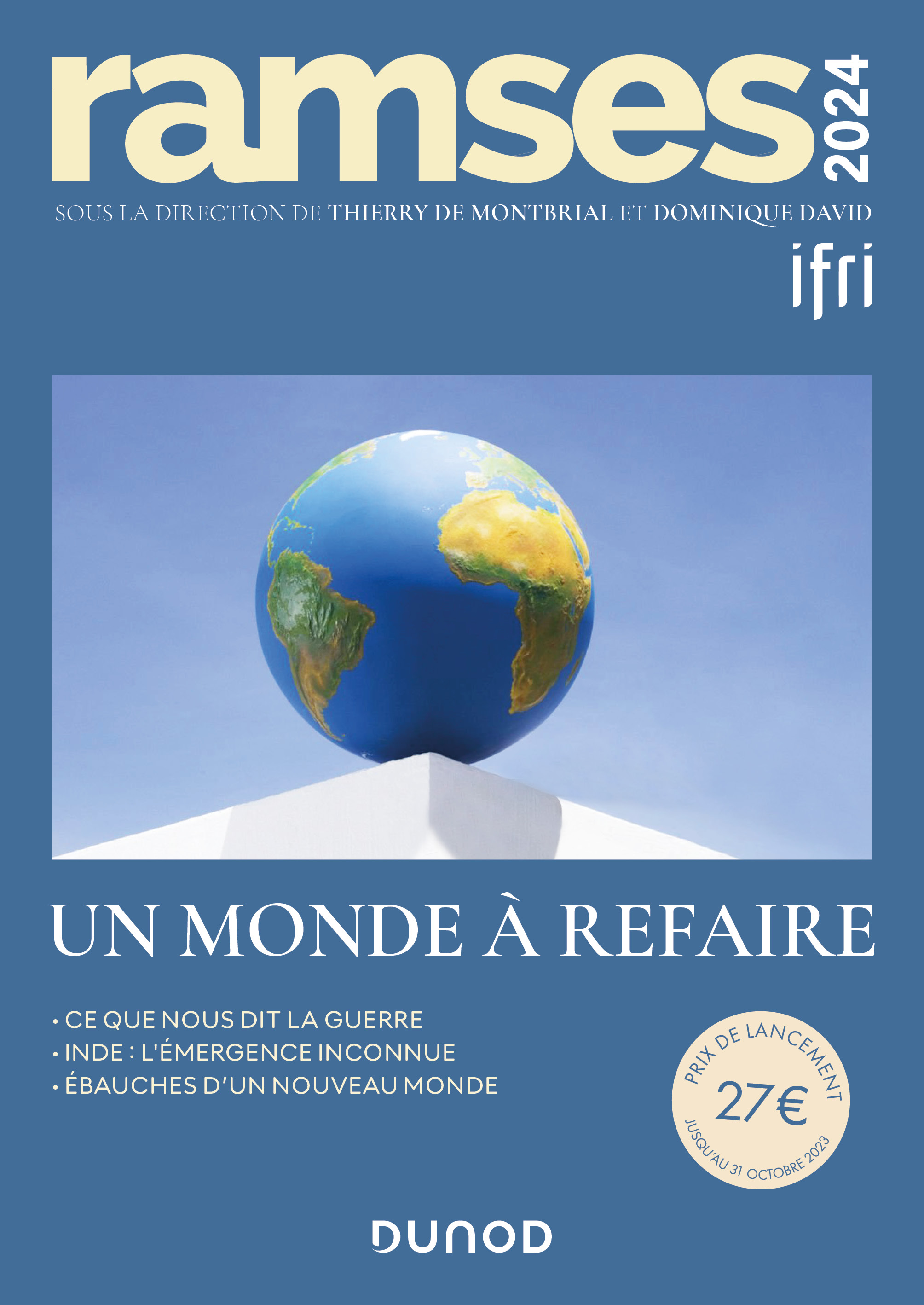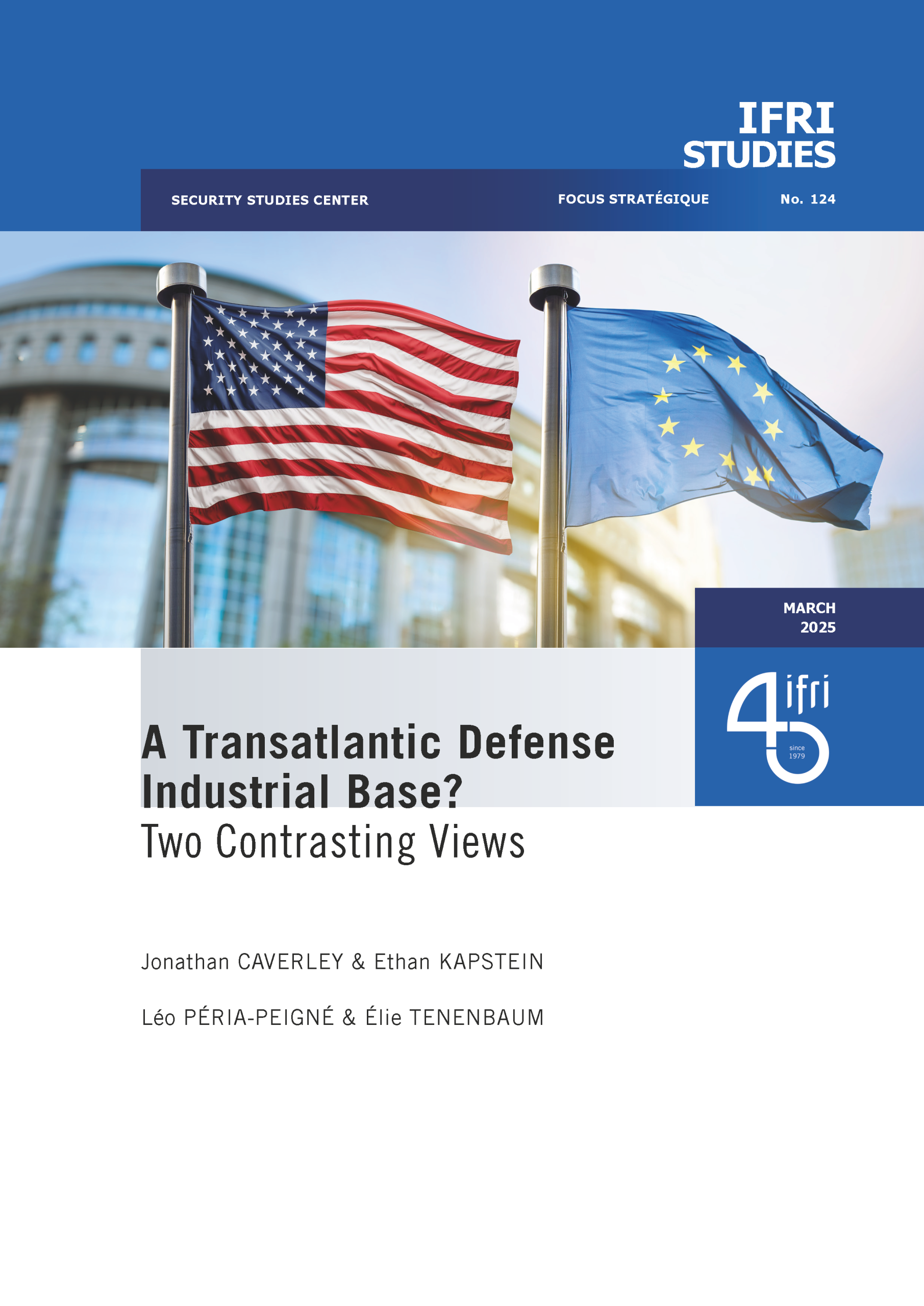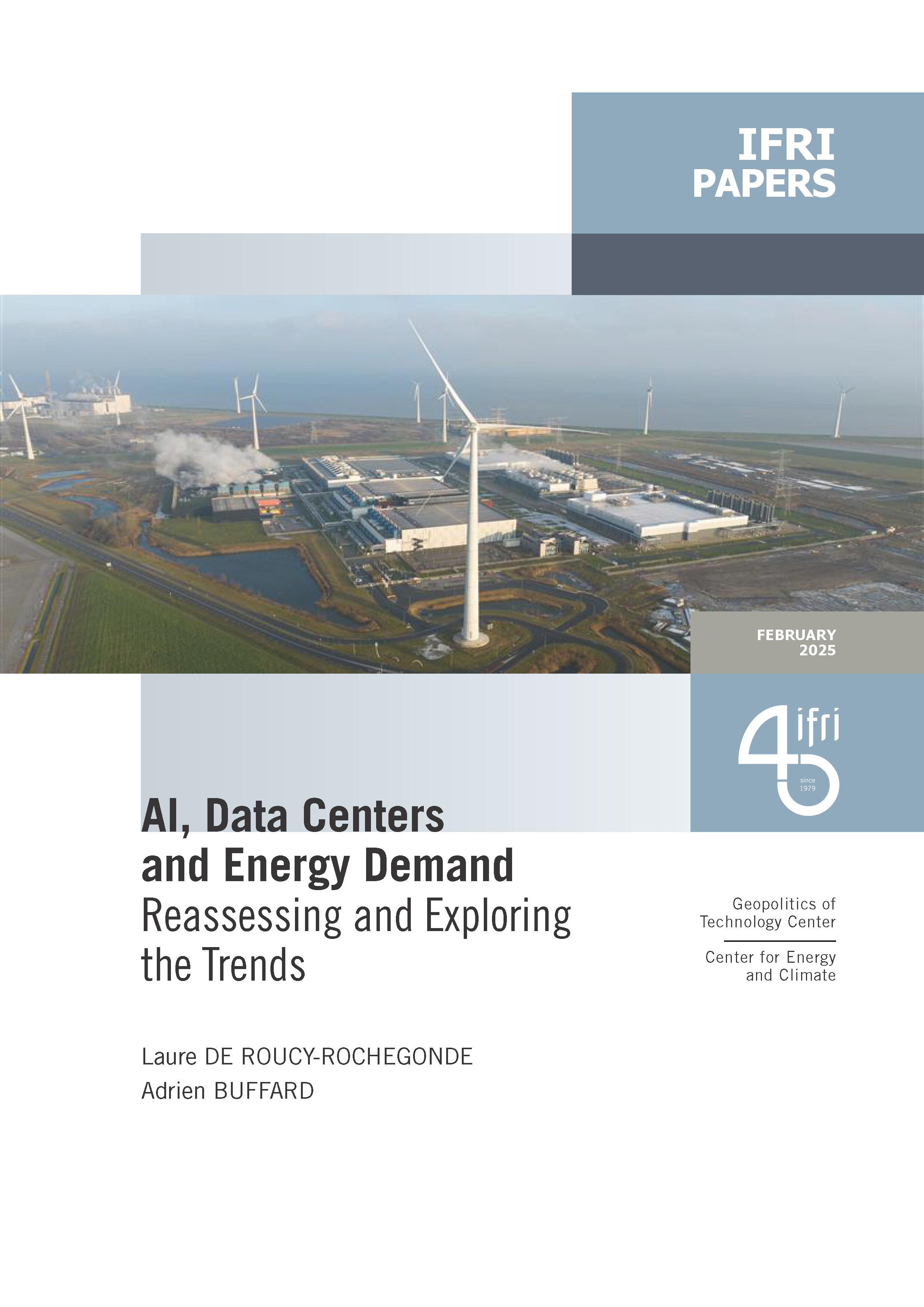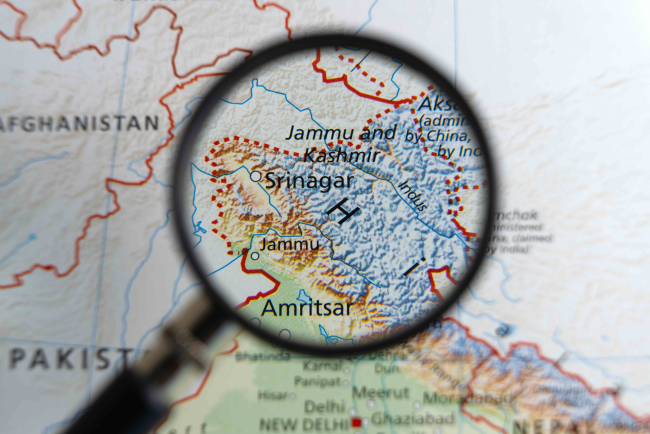Greenland and Iceland: Meeting Place of Global Powers in the Arctic

At the crossroads of American, European and Asian interests in the Arctic, Greenland and Iceland, the importance of which had for too long been underestimated, are set to play a central role in future regional developments. In order to exploit the potential of their growing economic ties with Asia, without becoming the Arctic “weak links”, Greenland and Iceland need to secure their economy on a long-term basis.
The Arctic is a laboratory of the challenges at stake in the 21st century. It has become the meeting place of G7/G8 powers, all present, although at different levels, within the Arctic Council. The fact that China and India are since 2013 permanent observers to the Arctic Council shows the unequivocal importance of this region on the international scene. Due to climate change, the Arctic region has been experiencing a rapid transformation and has consequently generated an unprecedented global interest in the past few years, with a particular emphasis on the energy and maritime transport sectors: Greenland and Iceland are a case in point.
Greenland: natural resources and desire for independence
Greenland, a self-ruled territory within the Kingdom of Denmark, has everything to attract any power: a strategic location in the Arctic region, natural resources ranging from Rare Earth Elements and uranium, to oil, gas, and fresh water, the largest climate laboratory of the Northern Hemisphere, and much more. A territory as large as about four times the size of France, Greenland is only inhabited by less than 57,000 persons. Apart from necessary incomes, education is the central issue to enable a stronger Greenlandic autonomy, if not one day independence. This is all the more true that only 16 votes, the majority at the Greenlandic Parliament, are needed to pass a legislation. The need for those few decisive politicians to understand, if not master, the geopolitical challenges linked to Greenland’s development is critical, if Greenland still wants to have a word to say on its future while facing the effect of lobbying activities. The potential consequences of foreign “soft power” on the Greenlandic elite should therefore not be underestimated, as who will educate the future elite will have a privileged access to Greenland at a time where the territory could get closer to independence. While the 2009 Self Rule Act gives Greenland the right to become independent, challenges to face are many, and the way remains long. Education is a key, not only to have a qualified local manpower and professional elite, but also for the population to understand the reality and limits of independence, especially in the context of Greenland. The case of Iceland is in that sense particularly interesting to study for Greenland, notably on the central issues of currency and defence.
Greenland, which left the European Communities in 1985, is facing a critical time of its development project. On one hand, the foreign and security policy dimension of Greenland’s developments since it got Self Rule, particularly on the uranium issue, shows that the Greenlandic desire of independence will have to take into account the reality of a sharing of competences between Denmark (foreign and security policy of the Kingdom) and Greenland (management of Greenland’s natural resources), in the absence of a Greenlandic state. An independent Greenland relying on others for its security, as it is the case for Iceland, would however still not have a full freedom over its natural resources when facing security issues. On the other hand, the need to urgently start one of the major industrial projects that have been on the agenda for years in Greenland is critical to maintain the interest of investors.
The Greenlandic desire of independence will notably require massive investments. The financing of this “independence”, which will turn into another form of dependence if the funds are not enough diversified, is seen to come mainly from Asia. China, South Korea, but also Japan, are among the most active Asian countries when it comes to Greenland. In 2011, Ove Karl Berthelsen, then Greenland’s Minister for Industry and Mineral Resources, was met in Beijing by no less than Li Keqiang, then China’s Vice-Premier and today’s Premier. In 2012, Lee Myung-bak, then South Korean President, made an historic visit to Greenland, becoming the first head of a G20 country to visit the Arctic territory. This unprecedented level of international interest for Greenland has continued to grow since then and has become truly global, as shown by the interest of Iran in Greenland in the field of fishery.[1]
Iceland: shipping routes and economic recovery
Iceland has, over few years, experienced a shifting geopolitical situation. The Arctic island moved from a situation where it appeared as an American “aircraft carrier” to another one as a future Chinese “harbour”. Adding to that a still ongoing “episode” with the European Union, the geopolitical case of Iceland can be seen as an interesting starter before the main course which is Greenland.
By far, China is the non-regional power advancing the best its interests in Iceland. Apart from the signing of a Sino-Icelandic Free Trade Agreement, the first ever between China and a European country, the most striking moment in 2013, almost gone unnoticed in international media in August 2013, was the possibility of a 95% purchase of one of the main Icelandic banks, Íslandsbanki, by Asian capitals, actually Chinese, according to some. This would have happened in a context where Iceland had gained a role of “laboratory of the West” for Chinese interests. The Chinese Embassy in Iceland, with a main building the size of which is far from being standard for a capital city such as Reykjavík, symbolises in itself China’s ambitions in Iceland. The most fascinating is that the Chinese Embassy is not limited to this imposing building, but counts another building, though a more standard one, home to the Embassy’s Economic and Commercial Counsellor’s Office. Some see in the huge Chinese Embassy in Reykjavík a “springboard”[2] to Greenland for Beijing. The currency swap agreement of 3,5 billion yuan, concluded in 2010, and extended in 2013, between the central banks of Iceland and China, illustrates how China and Iceland came closer together: in the case of Iceland, it can be seen as a beginning of dependence. The main question is then on the ability of Iceland, an island inhabited by about 320,000 persons, to handle China on the long term and still have its word to say, especially at a time where the Asian power is seen to become sooner than expected the first economy in the world. Thanks to a better economic health, Iceland has, for now, demonstrated its capabilities of resistance to the Chinese “stress test”, even though some consider Iceland as “overconfident” in its approach towards China, but the securisation of the Icelandic economy remains the critical issue to ensure this resistance on the long term.
A Sino-Icelandic expedition[3] to the North Pole demonstrated already in 2011 the potential Iceland could offer to China in its attempt to legitimise its interest and presence in the Arctic. Huang Nubo, a Chinese billionaire who used to work in the Chinese communist party’s department in charge of propaganda, wanted to buy an isolated piece of land in Iceland, which raised comments both in Iceland and abroad. It was thought to have ended in 2012 after a “no” from then Icelandic Interior Minister Ögmundur Jónasson, but the interest of Huang Nubo for this part of Iceland had not faded away in 2013, as shown in an interview to CNBC[4]: “Many people think Iceland is very remote but if you think about it in the long run, in 10 years... (…)”.[5]
Iceland is an access port not only to the Arctic but to the Atlantic too. It makes the island being twice strategic for China, which has planned to deviate progressively, but surely, a non-negligible part of its international maritime traffic via the Arctic. The stopover of Chinese ice-breaker Xue Long in Reykjavík in 2012 illustrates the importance of Iceland. The island could also, at a later stage, become a major access port to Greenland. The expected growing economic interdependence[6] between Greenland and Iceland, which will enable growth on both sides, will require a solid Icelandic economy, especially if the international maritime “hub” for Greenland, situated in Aalborg, Denmark, at least until 2022, was later to be moved, even partly, to Iceland. A strong Icelandic economy would limit the need of foreign investments in the Icelandic maritime sector, which could gain a strategic importance with regards to developments in Greenland.
The appointment by Singapore of its first Ambassador to Iceland, shortly before the South-East Asian city-state obtained its permanent observer status to the Arctic Council in 2013, is also a very significant illustration of what Iceland represents in the context of Arctic shipping routes. More than the appointment, it is the position that the Ambassador holds, which is telling. Singapore chose no less than its High Commissioner to the United Kingdom, the holder of one of the most prestigious post in the Foreign Service of a Commonwealth country, as its non-resident Ambassador to Iceland. Furthermore, it is the only Singaporean Ambassador covering a Nordic country who is not based in Singapore. At a time when the global dimension of the Arctic has never been so true, this appointment represents in a way the acknowledgement, by one of the main established maritime “hub” in the world, of one of the coming Arctic maritime “hubs”. As for any country willing to assert its interest in the region, Singapore showed the flag with the visit by a member of its government, Sam Tan Chin Siong, then Senior Parliamentary Secretary at the Singaporean Ministry of Foreign Affairs and the Singaporean Ministry of Culture, Community and Youth, to Reykjavík in 2013. Currently Minister of State at the Singaporean Prime Minister’s Office and the Singaporean Ministry of Culture, Community and Youth, he is expected to come back to Iceland by the end of 2014.
Japan is also active when it comes to both Greenland and Iceland. In 2014, Japanese Foreign Minister Fumio Kishida paid a visit to Denmark, the first official visit by a Japanese minister to Denmark in 25 years, and met in Copenhagen with Greenland´s Premier Aleqa Hammond, who is expected to visit Japan by the end of 2014. An intense year for Japan on the Arctic: Japan´s Parliamentary Vice-Minister for Foreign Affairs Takao Makino visited Reykjavík, where Japan upgradated its diplomatic presence with the appointment of its first resident Ambassador, while Greenland got its first visit ever by a member of a Japanese government (Vice-Minister for Internal Affairs and Communications Tadahiko Ito).
India, which also has an Embassy in Reykjavík, has demonstrated its interest for the island and Arctic shipping routes, with the visit of a delegation led by Milind Deora, then Indian Minister of State for Communications, Information Technology and Shipping, in 2013. The simple fact that China and India are interested in Iceland illustrates the strategic dimension of the island.
The positioning of Iceland in the Arctic region, at the crossroad of Asian and European interests, would give sense to an Icelandic membership of the Asia-Europe Meeting (ASEM), where the Arctic has become a topic of exchange.[7]
China, Greenland and Iceland
The interest of China for Greenland and Iceland is not new. In 2002, then Chinese President Jiang Zemin visited Iceland while then Premier Hans Enoksen of Greenland went to China in 2005. The intensity of China’s relations with those two strategic territories has increased in the past few years, however. The case of Iceland is the most obvious and the period has been favorable to the development of the relationship: on one hand, Iceland, an Arctic territory then almost economically collapsed, and on the other hand, China and its economic power, willing to assert its presence in the Arctic region. In 2012, then Chinese Premier Wen Jiabao started a European tour in Iceland, before going to Germany and Sweden (which then chaired the Arctic Council). It gives an idea of the importance Iceland has for China. The Arctic was on the agenda of this visit and a less highlighted continuation of this trip took place in Greenland for a delegation of nine persons led by then Chinese Minister of Land and Resources Xu Shaoshi.
The Chinese “soft power” remains strong in Iceland, especially in the field of Arctic research, as notably shown by a number of conferences and the building of a China-Iceland Joint Aurora Observatory in the North of Iceland. Chinese authorities, under the presidency of Xi Jinping, have demonstrated a continued interest for Iceland and Greenland, as shown by the visit by Chinese Vice-Premier Ma Kai to Iceland in October 2013 and the visit by Greenlandic Minister for Industry and Mineral Resources Jens-Erik Kirkegaard to China in November 2013. The Arctic was on the agenda of Ma Kai’s meeting with Icelandic Prime Minister Sigmundur Davíð Gunnlaugsson, while Jens-Erik Kirkegaard and China’s Minister of Land and Resources Jiang Daming agreed on a “strengthened cooperation between Greenland and China in the field of raw materials”.[8] In 2014, a third licence for exploration and production of hydrocarbons in the Dreki Area, off the coasts of Iceland, was granted[9]: while Chinese National Offshore Oil Corporation (CNOOC) has a 60% share in it, the chair of the Icelandic partner (Eykon Energy), Heiðar Már Guðjónsson, explained that “if [they] find a deposit with a billion barrels of oil, Iceland would be able to repay everything it owes”.[10] If the potential was to be confirmed, an indirect reimbursement of the Icelandic debt with Chinese capital as main source would inevitably create a source of dependence, and this is a growing reality with which Western countries may have to live with.
The story doesn’t say if the Chinese ambitions in Iceland would have been the same if the U.S. had not closed its Naval Air Station at Keflavík in 2006. In 2014, the U.S. showed a stronger presence in both Greenland (regular visits to Greenland by U.S. Ambassador in Copenhagen Rufus Gifford since taking up his post in 2013) and Iceland (visit by U.S. Assistant Secretary of State Victoria Nuland and acquisition of a new Embassy building). The U.S. military presence in Greenland at Thule Air Base and Chinese presence in the Greenlandic mining sector turn Greenland into a new U.S.-China meeting place: a “great game” of sorts, in which the European Union also takes part through its partnership agreement with Greenland and the island’s status of Overseas Countries and Territories (OCTs). In the case of Greenland and Iceland, the security framework of NATO is an important parameter to take into account when considering the risk of too strong a non-regional dependency, especially when thinking about the serious waves created by the prospect of a loan to Iceland from the non-NATO Arctic coastal state, Russia, following the 2008 financial crisis.
***
Ongoing developments in Greenland and Iceland do not take place at the periphery of international relations, but at the centre of a strategic region, the Arctic, which seems poised to play a key role in global economic affairs in the 21st century. The keen interest for the Arctic from Asian economies which are to be at the centre of this century reinforces the idea of an “Arctic century”, knowing that the Arctic will remain a crucial topic afterwards, due to climate change.
Economic activities in the Arctic region where the geopolitical risk will have to remain low require solid Greenlandic and Icelandic economies on a long-term basis. The rapid evolution in the Arctic region and the strategic characteristics of Greenland and Iceland, geographically at the centre of the transatlantic relation, cannot be a matter of indifference on both sides of the Atlantic, especially if a non-regional economic assistance could transform one of those territories into a “weak link” of the West.
In order to play a constructive role in the Arctic region, the European Union should serve as an economic “safety net”. Closer relations, without talking about a membership, would already strengthen the counterbalance that Greenland and Iceland will need to serenely develop economic ties with Asia.
The solidity of Iceland has been put to the test. The island’s economic recovery is impressive, even though all has not been solved. Greenland is far from having demonstrated a similar capacity to resist. That is the central issue of Greenland’s state-building project which will have, by virtue of Greenland’s unique characteristics, an impact on developments in the entire Arctic region.
Dr. Damien Degeorges is a Reykjavik-based international consultant and the author of ‘The Role of Greenland in the Artic’. He coordinates Ifri’s Norden Initiative.
[1] Sermitsiaq.AG (redaktionen), “Iran ønsker tættere samarbejde med Grønland”, 13 November 2013: <http://sermitsiaq.ag/iran-oensker-taettere-samarbejde-groenland>.
[2] Author’s translation. Thierry Garcin, Géopolitique de l’Arctique, Paris, Economica, 2013, p. 156.
[3] Embassy of Iceland – Beijing, “China-Iceland Arctic Fox Mission on Top of the World”, 15 April 2011: <www.iceland.is/iceland-abroad/cn/english/news-and-events/china-iceland-arctic-fox-mission-on-top-of-the-world/7716/>.
[4] Rajeshni Naidu-Ghelani, “China Tycoon Defends Bid for Chunk of Iceland”, 24 April 2013: <www.cnbc.com/id/100666980>.
[5] Ibid.
[6] Greenland is in the process of becoming a driver of Iceland´s Arctic growth while Iceland has the potential to facilitate Greenland´s development (air connection, etc.). In recent years, this potential was highlighted by the establishment of a Greenlandic-Icelandic Chamber of Commerce based in Reykjavík (2012) and the opening of a Consulate General of Iceland in Nuuk (2013).
[7] 11th ASEM Foreign Ministers’ Meeting (ASEM FMM11), Delhi-NCR, India, 11-12 November 2013, “ASEM: Bridge to Partnership for Growth and Development”, Chair’s statement: <http://eeas.europa.eu/asem/docs/chairs-statement-asem-fmm11-12112013_en.pdf>.
[8] Author’s translation. Naalakkersuisut, “Aftale mellem Grønland og Kina”, 4 November 2013: <http://naalakkersuisut.gl/da/Naalakkersuisut/Pressemeddelelser/2013/11/Aftale-med-Kina>.
[9] Orkustofnun, “Orkustofnun grants a third licence in the Dreki Area”, 22 January 2014: <www.nea.is/the-national-energy-authority/news/nr/1540>.
[10] Kevin McGwin, “Arctic oil could wipe out Icelandic debt – and more”, 14 February 2014: <http://arcticjournal.com/oil-minerals/422/arctic-oil-could-wipe-out-icelandic-debt-and-more>.

Available in:
Regions and themes
Share
Related centers and programs
Discover our other research centers and programsFind out more
Discover all our analyses
RAMSES 2024. A World to Be Remade
For its 42nd edition, RAMSES 2024 identifies three major challenges for 2024.
France and the Philippines should anchor their maritime partnership
With shared interests in promoting international law and sustainable development, France and the Philippines should strengthen their maritime cooperation in the Indo-Pacific. Through bilateral agreements, expanded joint exercises and the exchange of best practices, both nations can enhance maritime domain awareness, counter security threats and develop blue economy initiatives. This deeper collaboration would reinforce stability and environmental stewardship across the region.

The China-led AIIB, a geopolitical tool?
The establishment of the Asian Infrastructure Investment Bank (AIIB) in 2016, on a Chinese initiative, constituted an attempt to bridge the gap in infrastructure financing in Asia. However, it was also perceived in the West as a potential vehicle for China’s geostrategic agendas, fueling the suspicion that the institution might compete rather than align with existing multilateral development banks (MDBs) and impose its own standards.
Jammu and Kashmir in the Aftermath of August 2019
The abrogation of Article 370, which granted special status to the state of Jammu and Kashmir (J&K), has been on the agenda of the Bharatiya Janata Party (BJP) for many decades.







